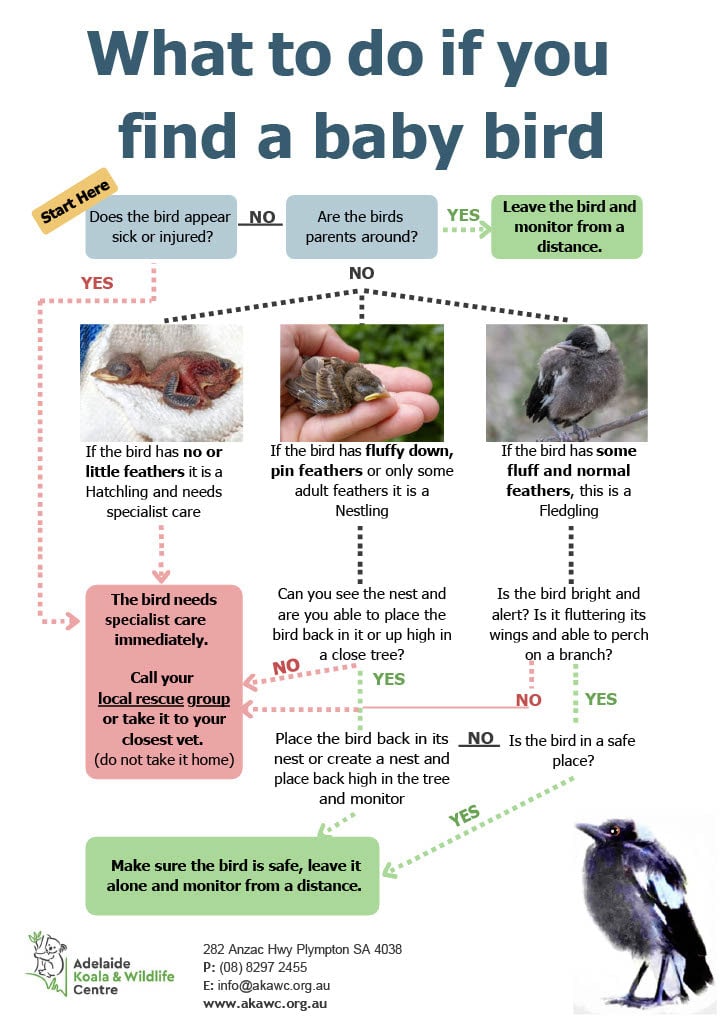
A Comprehensive Guide to Caring for a Baby Bird
Introduction
Baby birds, also known as nestlings, are vulnerable creatures that require specialized care and attention. Whether you’ve stumbled upon an abandoned nestling or are raising one intentionally, understanding their unique needs is crucial for their well-being. This comprehensive guide will provide you with detailed instructions on how to care for a baby bird, ensuring its health and development.
Assessing the Situation
Before taking any action, it’s essential to assess the situation and determine the bird’s condition.
- Is the bird injured? Check for any visible injuries, such as broken bones, cuts, or bleeding.
- Is the bird orphaned? If you find a nestling on the ground, it may have fallen out of its nest or been abandoned by its parents. Observe the area for any signs of a nest or adult birds.
- Is the bird cold? Nestlings are unable to regulate their body temperature and can quickly become hypothermic. Check if the bird feels cold to the touch or is shivering.
Providing Immediate Care
If the bird is injured or cold, immediate care is necessary.
- Keep the bird warm: Place the bird in a warm, dark place, such as a box lined with a soft cloth. You can also use a heating pad set to low and placed under the box.
- Do not feed the bird: Feeding an injured or cold bird can be dangerous. Wait until the bird has warmed up and is alert before offering food.
- Contact a wildlife rehabilitator: If the bird is severely injured or you are unsure how to care for it, contact a licensed wildlife rehabilitator as soon as possible.
Creating a Safe and Comfortable Environment
Once the bird is stable, you need to create a safe and comfortable environment for it.
- Nest: Provide the bird with a small, enclosed nest made of soft materials, such as a lined box or a basket.
- Bedding: Line the nest with soft, absorbent material, such as paper towels or shredded newspaper.
- Temperature: Keep the nest at a warm temperature, around 85-95°F (29-35°C). Use a heating pad or heat lamp placed outside the nest to maintain the desired temperature.
- Humidity: Provide humidity by placing a shallow dish of water near the nest.
Feeding the Baby Bird
Feeding a baby bird is a delicate process that requires specific food and techniques.
- Type of food: Nestlings require a high-protein diet. You can purchase specialized baby bird formula from pet stores or online.
- Feeding method: Use a syringe or eyedropper to feed the bird. Gently insert the tip of the syringe into the side of the bird’s beak and slowly release the formula.
- Frequency: Feed the bird every 2-3 hours during the day and every 4-6 hours at night.
- Amount: The amount of formula to feed depends on the bird’s size and age. Start with a small amount and gradually increase it as the bird grows.
Hygiene and Sanitation
Maintaining hygiene and sanitation is crucial to prevent infections and diseases.
- Clean the nest regularly: Remove soiled bedding and replace it with fresh material.
- Wash your hands: Always wash your hands thoroughly before handling the bird or its food.
- Clean feeding equipment: Sterilize syringes or eyedroppers after each use.
- Avoid overcrowding: If you are caring for multiple baby birds, keep them in separate nests to prevent the spread of disease.
Monitoring the Bird’s Health
Regularly monitor the bird’s health to ensure its well-being.
- Weight: Weigh the bird daily to track its growth and development.
- Activity level: Observe the bird’s activity level and energy. Lethargy or inactivity can be a sign of illness.
- Droppings: Check the bird’s droppings for any changes in color, consistency, or frequency.
- Breathing: Monitor the bird’s breathing for any signs of difficulty or distress.
Rehabilitation and Release
The ultimate goal of caring for a baby bird is to rehabilitate it and release it back into the wild.
- Feather development: Once the bird’s feathers are fully developed, it will be ready to fledge.
- Flight training: Provide the bird with opportunities to practice flying in a safe, enclosed space.
- Release: When the bird is strong and proficient at flying, it can be released back into its natural habitat.
Special Considerations
Caring for certain species of baby birds may require specific considerations.
- Birds of prey: Birds of prey, such as hawks and owls, have specialized dietary needs and require training to hunt live prey.
- Waterfowl: Waterfowl, such as ducks and geese, need access to water for swimming and foraging.
- Songbirds: Songbirds have complex vocalizations and require socialization with other birds of their species.
Conclusion
Caring for a baby bird is a rewarding but challenging experience. By following these comprehensive instructions, you can provide the bird with the necessary care and attention to ensure its health, development, and eventual release back into the wild. Remember to prioritize the bird’s well-being, seek professional assistance when needed, and approach the task with patience and compassion.
